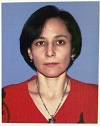д-р мед. наук, зав. отделом биохимии с группой микробиологии АО «Республиканский специализированный центр хирургии им. В. Вахидова», 700115, Республика Узбекистан, г. Ташкент, ул. Фархадская, 10
Показатели системного воспаления и окислительного стресса при стентировании коронарных артерий у больных ИБС
АННОТАЦИЯ
В статье обсуждаются некоторые аспекты воспаления и окислительного стресса (ОС) у больных ИБС и метаболическим синдромом после стентирования коронарных артерий. Установлено увеличение в крови провоспалительных маркеров и интенсивности генерации АФК с накоплением МДА при снижении активности каталазы. Особую группу риска составляют пациенты с трехсосудистым поражением коронарных артерий. Полученные результаты диктуют необходимость купирования ОС и обеспечение кардиопротекции у больных ИБС перед стентированием, а также и после него.
ABSTRACT
In article some aspects of an inflammation and oxidizing stress (OS) at patients with ischemic heart disease (IHD) and metabolic syndrome after coronary stent introduction are discussed. The increase of proinflamatory markers and intensification of reactive oxygen species production in blood, malondialdehyde accumulation and сatalase activity decreasing was established. Patients with three-vascular defeat of coronary arteries are group of risk. These results dictate necessity to OS specific correction and cardio protection therapy at patients with IHD before and after coronary stent introduction.
Список литературы:
References:


